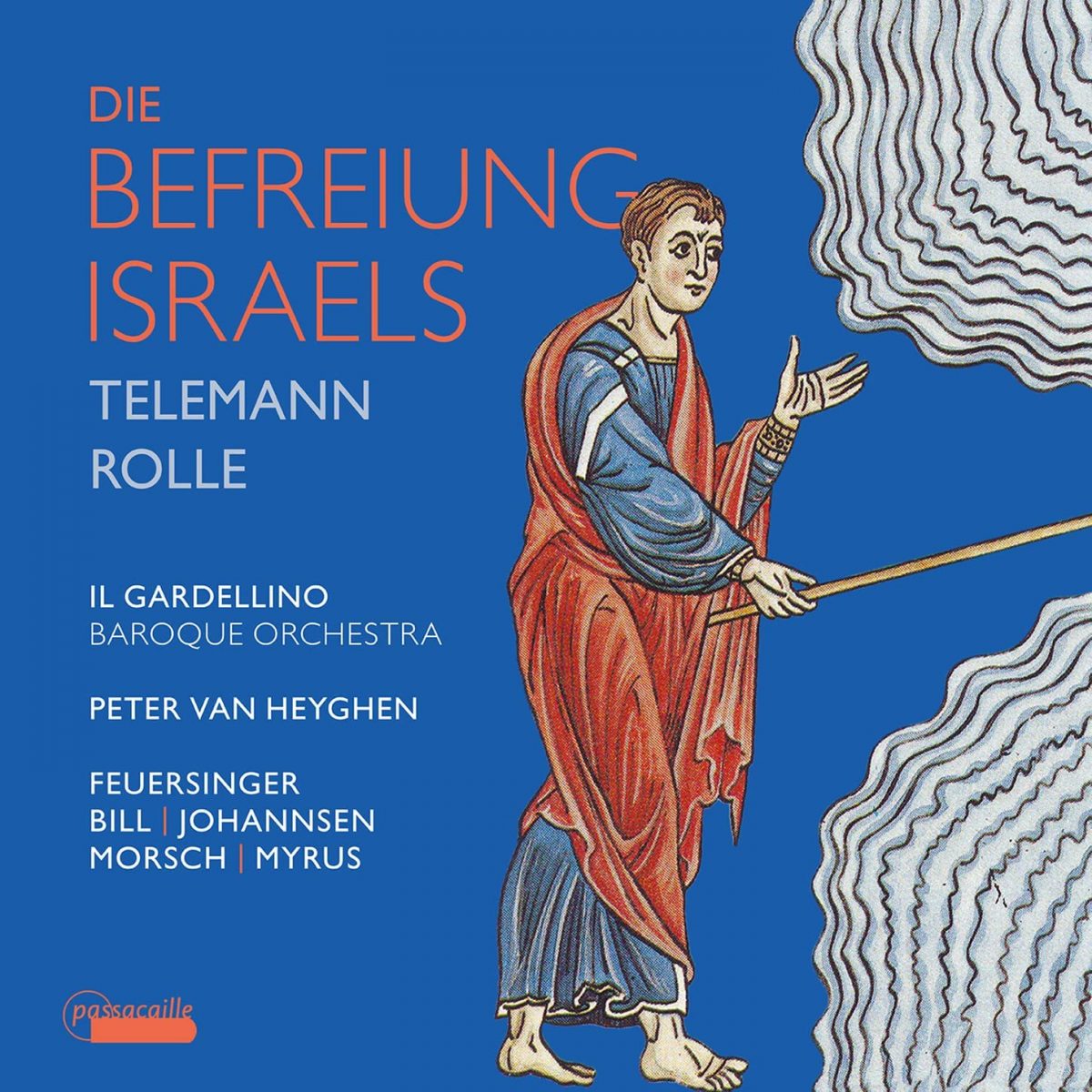Telemann: Das befreite Israel (1759)
Rolle: Die Befreiung Israels (1774)
Miriam Feuersinger, Elvira Bill, Daniel Johannsen, André Morsch, Sebastian Myrus SmSTBB, Il Gardellino Baroque Orchestra, directed by Peter van Heygen
78:22
Passacaille 1132
This is an excellent and fascinating placement of two settings around the same subject on this CD, offering two very distinctive stylistic approaches presented by these composers side by side, and yet set some 15 years apart! There are some bold strokes of musical pictorialism, drama, and délicatesse on display from both. One should not underestimate Telemann’s ability to find a compact and cogent form here, we are in very similar compositional territory to the fervour and flexibility found in his remarkable “Donner-Ode” (TVWV6:3a/b). Interestingly, the two librettos do also partially overlap, J .F. W. Zachariae’s original poetry was expanded by the second preacher at Telemann’s baptismal Church, Heilig-Geist-Kirche in Magdeburg, one Christoph Christian Sturm, a prominent member of the Magdeburg Scholar’s club, who went on to write for C. P. E. Bach, Telemann’s godson.
The rich instrumentation is equally telling, Telemann in that vintage late-Baroque mould, Johann Heinrich Rolle of course in more Empfindsamer mode, as espoused by C. H. Graun. Telemann’s setting is concise and compact, dispensing with recitatives, which keeps the dramatic narrative flowing. The Rolle, having extra characters, including Moses, has eight recitatives, to as it were “tee-up” the following movement! Telemann’s highly imaginative orchestral movement (Track 9) is an unbounded flood of surging tones with trumpets and horns depicting the great swell of the waves, engulfing the Pharoh’s chasing army, here played with tremendous gusto! Turning to the singers now, there are some very solid performances all around. Miriam Feuersinger is sublime in the aria Pflanze sie, Herr auf den Huegeln (Track 12). Oddly, the inclusion of recitatives in the Rolle setting seemed to take it back to the Baroque, but the opening bars strike out, and the beautifully constructed arias, and arias with chorus move us to the expressive musical language of C. H. Graun, perhaps even beyond to C. P. E. Bach himself? Track 20 takes us through the stormy torrents at some pace, showing that Rolle also knew a thing or two about musical pictorialism.
It is towards the end of the Rolle work that the J. F. W. Zachariae poetry appears, and completes this juxtaposition of stylistic approaches making them truly salient in their differences! The soloists give expressive and cogent performances, which neither founder in excesses nor under-powering wilt. Il Gardellino lend an ever-bright and impressive sheen to these two fine works, especially the brass section of horns and trumpets (drums adding extra impact).
The final chorus gives the means and measure of both composers in a potent nutshell; do I detect a slightly veiled emulation by Rolle?
The recorded sound is amazing (Bruges 16-19th August 2022) and adds to the vibrancy of this warmly recommended recording moving past the more familiar Handelian work. The CD notes are most informative on the backgrounds to these two fine settings.
David Bellinger
